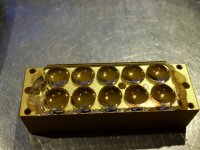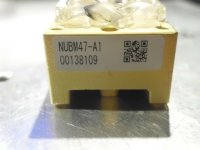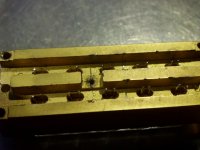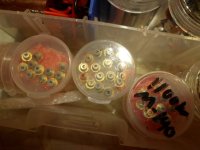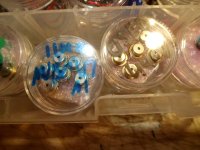A G2 lens is best for power testing and if your reading is low then make sure your lens is clean, I have seen half the output missing because of a dirty lens that didn't look to be all that dirty, but after cleaning with a ZEISS lens wipe I found all the power was there, remember to keep your diode windows protected, I keep my diodes in little containers and limit their exposure to air, when I press one into a module I install a lens right away then solder wires to my pins, the less exposure to open air on your workbench the better and never let your fingers touch the window, they are slightly recessed which helps to protect them, but any contaminants can burn and cause the window to fracture, because all the light from the tiny p/n junction exits the window in a very small spot.
The windows of the LD's were clean before extraction, and am not noticing any new spots or lines in the output.
So I think its safe to say they acquired no damage during the extraction. I was worried some flux or indium may splash.
Cant remember where I read it, but there was also correlation to damage based on things like EMF from incandescent lighting
degrading the gain medium. Though I'm not sure what type of shielding was recommended to prevent this. Storage and
environment is definitely worth noting but may only apply to specific gain mediums.
I tested the raw output with no lens, and it appears that there was no damage suffered from heating. The first diode I tested
post extraction was the 'runt of the litter' and yielded :
Pre: 5.2W vf- 4.8V @ 4A Threshold .5A
post: 5.2W vf- 4.8V @ 4A Threshold .5A
I think the key is to heat the block accurately and not exceed the melting point of the indium. I wonder at what temp damage occurs?
A neat experiment would be to sacrifice a diode and heat to specific temps for a set duration repeatedly and try to find
the point where there is noticeable degradation. Taking a guess, I am going to assume that high temps are not as bad as
long as the laser is not on whilst heating. Could very well be wrong on that point though.




